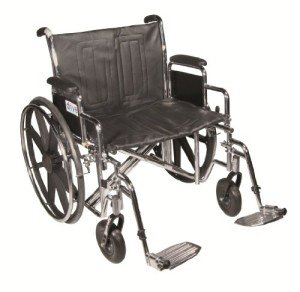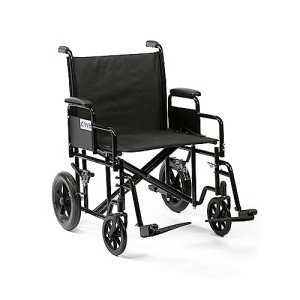9 . What Your Parents Teach You About Bariatric Living Aids
페이지 정보

본문
 Bariatric Living Aids
Bariatric Living AidsBariatric (obese) patients need heavy duty mobility aids to help them maintain self-reliance. Using small equipment increases staff stress and dangers injuries to both the client and caretaker.
 Ensure that equipment is effectively sized by carrying out home assessments. Widen corridors, doors, and ramps if needed for buy bariatric wheelchair equipment to safely access homes.
Ensure that equipment is effectively sized by carrying out home assessments. Widen corridors, doors, and ramps if needed for buy bariatric wheelchair equipment to safely access homes.Walking Aids
Walking aids are bariatric mobility equipment advised by a physician or physio therapist to maintain your self propelled bariatric wheelchair-reliance and help you recuperate from injuries, surgical treatment or pain. They are also utilized long term for people with muscle weakness or balance issues. They are readily available in a series of types to meet your requirements consisting of, walking canes, rollators and walkers for higher stability.
Physiotherapists are the most qualified to assess your requirements and prescribe the finest walking aid for you. This evaluation includes an evaluation of your functional status, day to day mobility requirements (e.g. navigating thresholds, public transport) and your danger factors for falls such as cardiovascular, musculoskeletal and neurological.
A great physiotherapist will be able to offer the right bariatric walking aid for you, that includes a proper prescription based on your height, weight and healthcare plan in addition to a comprehensive rehab program. This will optimise your healing and lower the threat of future injury.
Bariatric medical equipment such as bariatric canes, commodes, shower chairs and wheelchairs are designed to accommodate bigger clients who require mobility assistance. Often standard medical items can not support the added weight therefore needs to be modified with extra bracing to guarantee that they are safe to use. This adjustment is an important action to assist individuals with obesity feel more positive about living separately in their own homes, and it can likewise make their experience at medical facility and other medical centers more manageable by decreasing the probability of them being rejected for admission or treatment due to a lack of sufficient mobility equipment.
Crutches
Crutches are an efficient bariatric wheelchair 400 lb capacity living aid for people who require support while walking. They take weight off of one leg and enable the user to push through their hands rather than their knees or feet, assisting them to move quicker and more effectively than they would be able to do otherwise. They likewise help to avoid pressure on the injured knee or foot, which can lead to further discomfort and pain.
When utilizing crutches, it is crucial to position them properly so that the hand grips are 1 to 2 inches below the elbow when in a relaxed underarm position. Similarly, the axillary pad must rest versus the patient's chest straight above their elbow, instead of extending down past their underarm. This will enable the user to keep their hands totally free for balance and control.
Patients ought to always mosey and thoroughly while utilizing crutches to avoid falls. They need to prevent steep or icy slopes and keep the crutches clear of obstructions such as poles and stair railings. They must also make sure that they are not leaning on the tips of their crutches, which can trigger them to fall over or divert off in a direction all of a sudden. It is recommended that patients utilize crutches in sets so that they can help to stable one another if needed.
To ascend stairs, the patient ought to stand near to the top of the action and hold the handrail for assistance. They ought to then bring their crutches to the next step listed below them and put their foot on it before progressing. They must then repeat the procedure of moving down each step. Alternatively, the client might be able to rise and come down stairs by leaning on the chair arm of a stable chair.
Lots of doctors prescribe crutches to their patients after an injury or surgical treatment. However, if you are not comfy with them or feel that they do not supply adequate stability or assistance, consult your physician to talk about alternatives. For circumstances, you may be able to attempt a walking stick rather of crutches or a wheelchair if your doctor feels that it will be better suited for your situation.
Commodes
Commodes are a fantastic bariatric living aid that provides clients with toileting independence. Carers can assist their clients transfer to the commode, and then leave the room, providing personal privacy and minimizing tension and stress and anxiety for clients who have problem with going to the bathroom on their own.
Basically, a commode is a chair with a cutout in the seat that serves as a toilet. The majority of have a pot connected under the cutout that acts as a collection pail for waste. The commode can be utilized as a standalone toilet or over an existing one, and numerous have detachable legs to permit it to fold flat for storage. There are numerous types of bedside commodes readily available, and some may be covered by insurance coverage, so it's essential to consult your healthcare company and insurance provider.
Shower Chairs
For individuals who are not able to stand for extended periods, entering and out of the bathtub can be hard. Falling while attempting to bathe can lead to serious injuries and pain. Shower chairs, likewise called bath chairs, are a bariatric living help that can assist avoid falls and make bathing much safer.
There are a large variety of shower chairs to fit the requirements of different people. For instance, a basic shower chair with or without back can support as much as 300 pounds while swivel designs enable users to being in the tub and orient themselves in a position to reach the shower knobs, soap, Bariatric Living Aids etc. Some shower chairs can likewise be rolled over the toilet to double as a commode seat and are offered with or without arms.
When picking a shower chair, it is essential to take measurements of the space and tub to ensure that the chair will be able to fit properly. In addition, some people discover it useful to place non-slip shower mats both inside and outside of the shower to help keep the chair from moving, especially if water gets on the floor.
Numerous individuals who utilize shower chairs discover that they can be more comfortable while sitting in them than on a bath stool, which can be more uneasy for extended periods of time and might not have an adjustable height setting. Nevertheless, a shower stool can still be helpful for people who have the ability to get in and out of the tub with relative ease and are just searching for some additional stability while bathing.
Individuals who want to purchase a shower chair will require to have a physician compose a prescription for it and perhaps deal with their Medicare Advantage strategy or personal insurance provider to see if they can get coverage for the product. Sometimes, an individual who has significant mobility concerns might be able to have the shower chair covered by Medicaid. If that's the case, the person must talk with their state Medicaid agency to identify what the rules and guidelines are for that area.
- 이전글What Is The Reason? Programming A Key Is Fast Increasing To Be The Hottest Trend Of 2023 25.02.01
- 다음글15 Of The Most Popular Double Glazing Fitters Near Me Bloggers You Should Follow 25.02.01
댓글목록
등록된 댓글이 없습니다.
